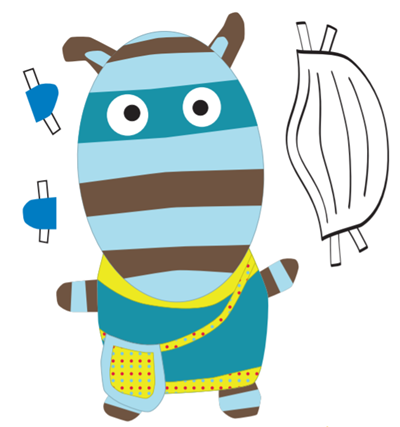Supporting children to understand why they may see people wearing facemasks and visors.
As children are exposed to the sight of people wearing facemasks and sometimes visors, it is likely that they may have questions, or sometimes may even become frightened. To help children with their questions or concerns, we have created this resource to help you navigate through this time.
Why do young children find masks unsettling?
Distorts facial features.
Masks can make familiar people unrecognisable and contributes to stranger anxiety – a familiar person now appears to be a totally new and unknown person.
Object permanence. Infants are working on developing this concept, which involves a baby’s understanding that when things disappear it does not mean that they are gone forever. Before this understanding, children think that when items (or people) disappear from view that they are completely gone.
A mask covering may exacerbate this by obscuring identity so that a child thinks a teacher has left.
Obscures ability to read facial expressions. Children are very tuned into our expressions, often without us knowing. They look to our faces for assurance that “Yes, this is safe,” and even for clues about danger, “No, this is not safe.” A mask covers your mouth, which you rely on to give a comforting cue, such as a smile. Keep smiling, though. Our eyes also give non-verbal cues to children.
Supporting children’s understanding If children ask you questions such as ‘Why is that person wearing a facemask and/or a visor?’ you should explain that masks are a precaution that some people are taking to stay healthy. However, emphasise to children that these do not replace healthy practices such as handwashing, covering coughs and sneezes, etc.
Who wears a mask or visor? Have a discussion with children what people wear masks and visors for their jobs – firefighters, doctors, dentists, construction workers, and even superheroes like Candyfloss! Make a list of these roles and discuss why these people might need masks to do their work.
People who help us
Read a book about people who help us to see if you can find any more people wearing masks and ask the children why they think these people wear masks.
Peek-A-Boo game
Support the development of object permanence with simple games like peek-a-boo. Show the object to the child and then cover with a blanket. Look at the infant and say with hands raised and in a positive tone, “Where did the ball go?” Look down, remove the blanket and repeat with excitement, “Here it is!” Repeat often and with different objects.
Candyfloss Resources
They are not the typical materials we use, but they are materials that can help children process what is happening right now. Start here and see where the conversations take you as you continue to support your child during this time.






